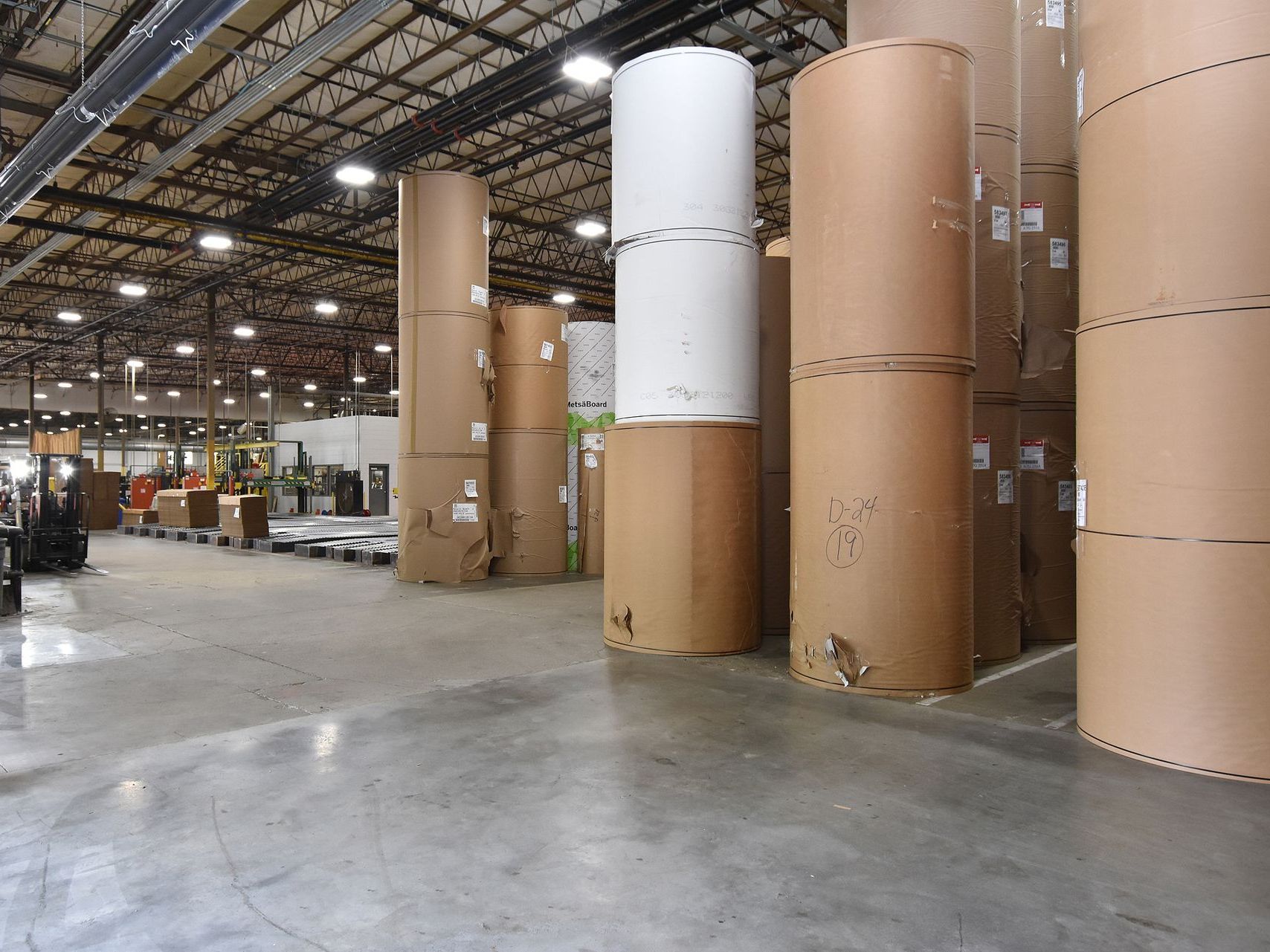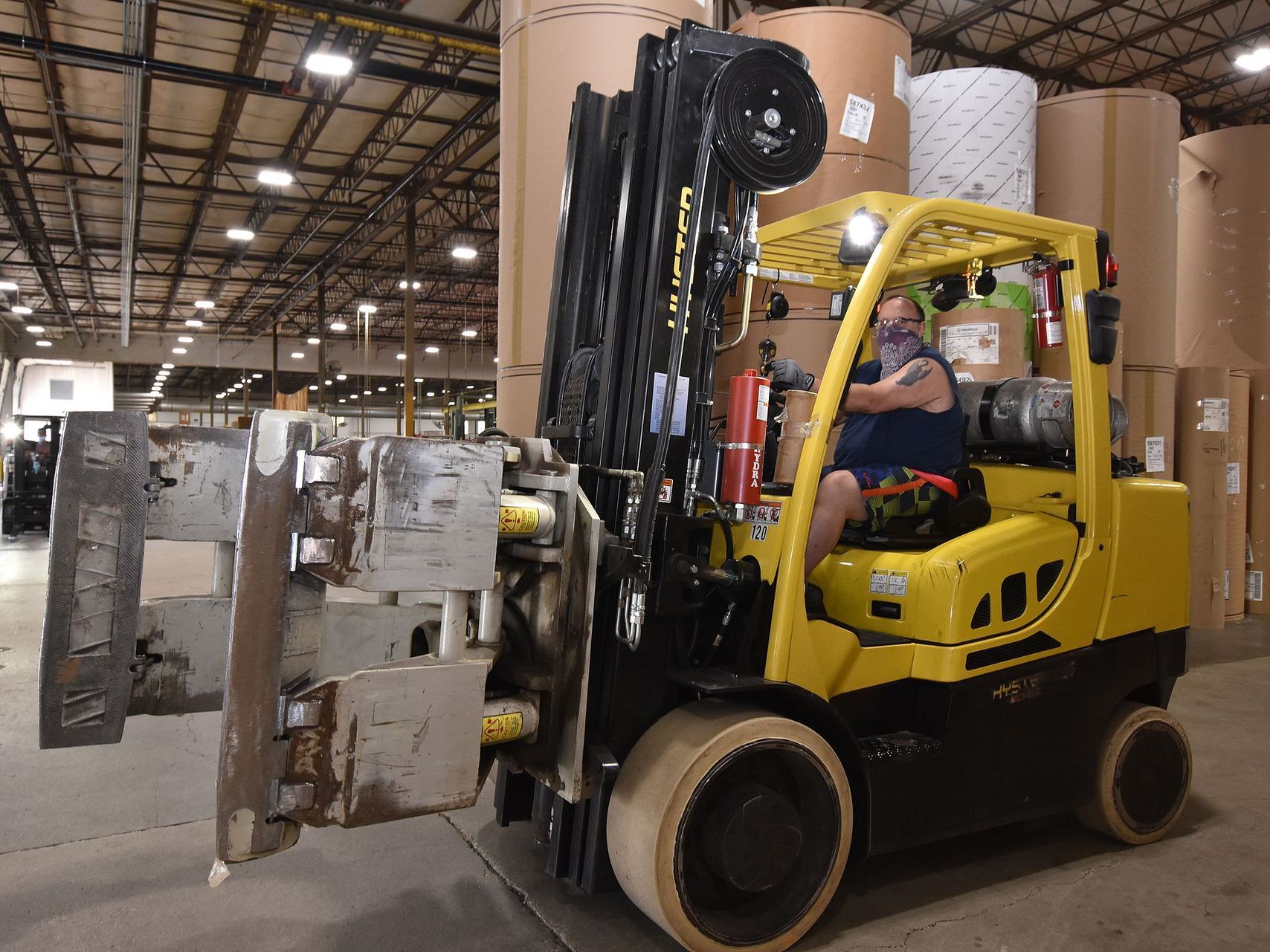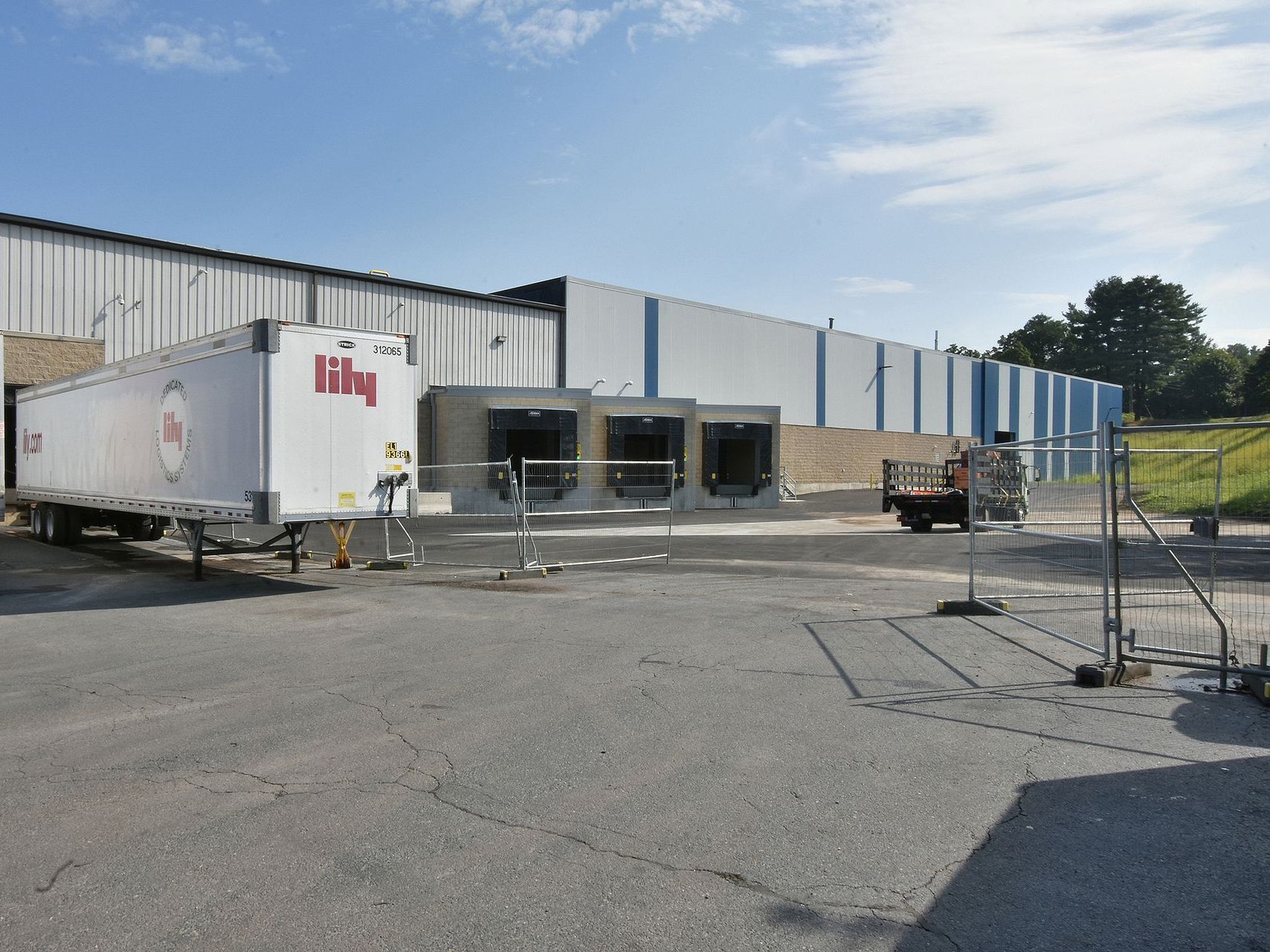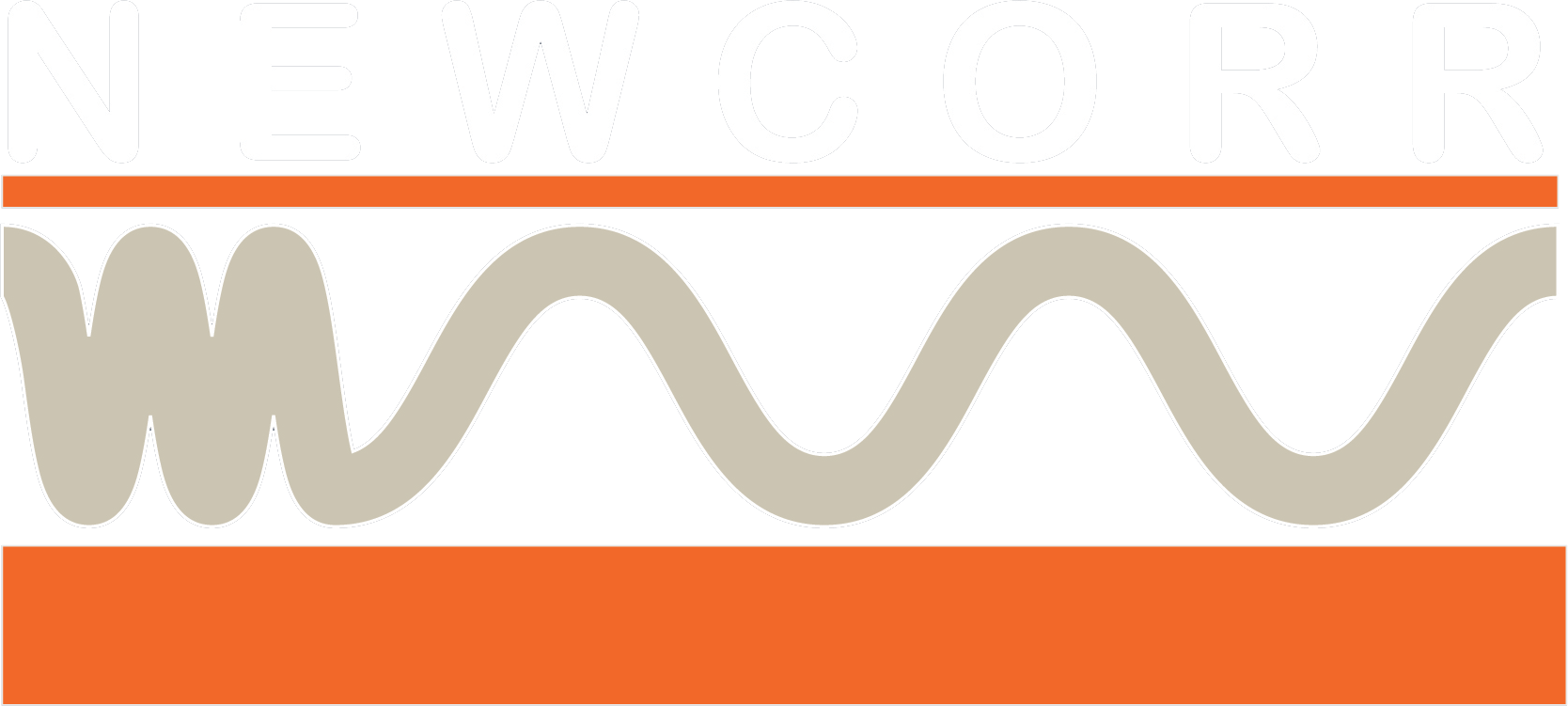508-393-9256 | 66 Lyman St. Northborough, MA 01532
Affiliated with the Schwarz Partners, LP Investment Group
Corrugated Material Terms glossary
Know the difference between a carton and a case? From "Adhesive" to "Wrap-Around Blank", find clear explanations of commonly used words and phrases related to the production, character, and use of corrugated material.
Corrugated Box Material Definitions:
Adhesive: Substance used to hold plies of solid fiberboard together; to hold linerboard to the tips of flutes of corrugated medium; or to hold overlapping flaps together to form the joint or to close a box.
Bale: A shaped unit of materials, enclosed in a fiberboard container or other wrapping, bound by strapping, rope, or wire.
Basis Weight: An attribute of containerboard, but the values may be determined from the combined corrugated board. When determining the basis weight from combined board, the take-up factor of the corrugated medium, which varies with flute size, and the weight of the adhesive must be considered.
Bending: Ability of containerboard or combined board to be folded along scorelines without rupture of the surface fibers to the point of seriously weakening the structure.
Blank or Box Blank: A flat sheet of corrugated board that has been cut, scored, and slotted, but not yet glued together.
Box Manufacturer's Certificate (BMC): In the United States, the Box Maker's Certificate is printed in a round or rectangular design on a corrugated box flap that certifies the box conforms to all applicable standards. This stamp identifies the material and certifies the results of the Mullen Bursting Test or the Edge Crush Test. Sometimes referred to as a class stamp or cert stamp.
Box Style: Distinctive configuration of a box design, without regard to size. A name or number identifies styles in common use.
Boxboard: Types of paperboard used to manufacture folding cartons and set up (rigid) boxes.
Built-Up: Multiple layers of corrugated board glued together to form a pad of desired thickness, normally used for interior packing.
Bulk: Unpackaged goods within a shipping container. Also, a large box used to contain a volume of product (e.g., "bulk box").
Bundle: Shipping unit of two or more boxes grouped together, usually with plastic banding.
Bursting Strength: Strength of material in pounds per square inch, as measured by the Mullen or Cady tester.
Caliper: Usually expressed in thousandths of an inch (mils) or sometimes referred to as "points." Caliper measurements are also used as an indirect measure of manufacturing quality.
Cardboard: Thin, stiff pasteboard used in the creation of playing cards, signs, etc. Term is often misused to refer to Boxboard (folding cartons) and Containerboard (corrugated boxes).
Carton: Folding box made from Boxboard, used for consumer quantities of product. A carton is not recognized as a shipping container.
Case: Corrugated or solid fiberboard box as used by the packaging industry.
Chipboard: Paperboard generally made from recycled paper stock. Uses include backing sheets for padded writing paper, partitions within boxes, and the center ply or plies of solid fiberboard.
Combined Board: Fabricated sheet assembled from several components, such as corrugated or solid fiberboard.
Compression Strength: Corrugated box's resistance to uniformly applied external forces. Top-to-bottom compression strength is related to the load a container may encounter when stacked. End-to-end or side-to-side compression may also be of interest for particular applications.
Containerboard: Paperboard components (linerboard, corrugating material and chipboard) used to manufacture corrugated and solid fiberboard. Raw materials used to make containerboard may be virgin cellulose fiber, recycled fiber or a combination of both.
Corrugated Board, Corrugated Fiberboard: Corrugated board is comprised of one or more layer of wavy corrugated medium (fluting) and one or more layer of flat corrugated linerboard.
Corrugator: Machine that unwinds two or more continuous sheets of containerboard from rolls, presses flutes into the sheet(s) of corrugating medium, applies adhesive to the tips of the flutes and affixes the sheet(s) of linerboard to form corrugated board. Continuous sheet of board may be slit to desired widths, cut off to desired lengths and scored in one direction.
Design Style: Style of fiberboard trays or caps having flaps scored, folded and secured at flange side walls forming the depth, as opposed to a slotted style having a set of major and minor closing flaps.
Die-Cut: Cut made with special steel rule dies. The act of making a part or container which is cut and scored to shape by such tools. Also, a box that is stamped out from a steel rule die, as opposed to being produced on a flexo folder gluer. Die-cut boxes provide greater design options and tighter size tolerances.
Dimensions: For regular slotted containers (RSC), box dimensions are expressed as length x width x height, always using inside dimensions.
Double Wall: Corrugated board construction where two layers of medium are glued between three layers of flat linerboard facing.
Edge Crush Test (ECT): The Edge Crush Test is a standard industry measure of the stacking strength, the amount of force in pounds per inch needed to cause compressive failure of an on-edge specimen of corrugated board. This measured force is a primary factor in predicting the compression strength of the completed box. When using certain specifications in the carrier classifications, minimum edge crush values must be certified.
Facings: Sheets of linerboard used as the flat outer members of combined corrugated board. Sometimes called inside and outside liners.
Fiberboard: General term describing combined paperboard (corrugated or solid) used to manufacture containers.
Flaps: Extension of the side wall panels that, when sealed, close the remaining openings of a box. Usually defined by one scoreline and three edges.
Flexo Folder Gluer: Machine, usually capable or running at high speed that prints, folds, cuts, and glues sheets of corrugated board, converting them into shipping boxes.
Flute: The wavy layer of corrugated medium that is glued between the flat inner and outer sheets of linerboard to create corrugated board. Fluting generally runs parallel to the height of a shipping box. Flute sizes come in A, B, C, D, E, and F.
Joint: The opposite edges of the blank glued, stapled, wire stitched, or taped together to form a box.
Kraft: German word meaning "strength", designating pulp, paper, or paperboard produced from wood fibers.
Liner: Creased fiberboard sheet inserted as a sleeve in a container and covering all side walls. Used to provide extra stacking strength or cushioning.
Linerboard: Flat sheets of paper that comprise the outer surfaces of a sheet of corrugated board.
Medium: Paperboard used to make the fluted layer of corrugated board.
Mullen (or Burst) Test: The Mullen Test is a standard industry measure of the bursting strength of corrugated board to withstand external or internal forces, and to contain the contents during handling. This test certifies that the box can withstand the stated pressure (lbs. per sq. in.) as applied by a Mullen Tester.
Overlap: Design feature wherein the top and/or bottom flaps of a box do not butt, but extend one over the other. The amount of overlap is measured from flap edge to flap edge.
Pad: Corrugated or solid fiberboard sheet, or sheet of other authorized material, used for extra protection or for separating tiers or layers of articles when packed for shipment.
Palletizing: Securing and loading containers on pallets for shipment as a single unit load, typically for handling by mechanical equipment.
Panel: A "face" or "side" of a box.
Paperboard: One of the two major product categories of the paper industry, Containerboard and Boxboard. Includes the broad classification of materials made of cellulose fibers, primarily wood pulp and recycled paper stock, on board machines. (The other major product group of the paper industry is paper, including printing and writing papers, packaging papers, newsprint and tissue.)
Partition: Set of corrugated, solid fiberboard or chipboard pieces that interlock when assembled to form a number of cells into which articles may be placed for shipment.
Ply: Any of the several layers of linerboard or solid fiberboard.
Point: Term used to describe the thickness or caliper of paperboard, where one point equals one-thousandth of an inch.
Puncture Resistance: Puncture resistance of combined board indicates the ability of the finished container to withstand external and internal point pressure forces and to protect the product during rough handling. This method is used on heavy double wall and triple wall as an alternative to burst.
Regular Slotted Container (RSC): Box style created from a single sheet of corrugated board. The sheet is scored and slotted to permit folding. Flaps extending from the side and end panels form the top and bottom of the box. The two outer flaps are one-half the container's width in order to meet at the center of the box when folded. Flute direction may be perpendicular to the length of the sheet (usually for top-opening RSCs) or parallel to the length of the sheet (usually for end-opening RSCs).
Score or Scoreline: Impression or crease in corrugated or solid fiberboard, made to position and facilitate folds.
Scored and Slotted Sheet: Sheet of corrugated fiberboard with one or more scorelines, slots or slits. May be further defined as a box blank, a box part, a tray or wrap, a partition piece, or an inner packing piece.
Seam: Junction created by any free edge of a container flap or panel where it abuts or rests on another portion of the container and to which it may be fastened by tape, stitches or adhesive in the process of closing the container.
Set-Up Boxes: Boxes that have been squared, with one set of end flaps sealed, ready to be filled with product. An article that is packed for shipment in a fully assembled or erected form.
Sheet: Rectangle of combined board, untrimmed or trimmed, and sometimes scored across the corrugations when that operation is done on the corrugator. Also, a rectangle of any of the component layers of containerboard, or of paper or a web of paperboard as it is being unwound from the roll.
Slit: Cut made in a fiberboard sheet without removal of material.
Slit Score: Cut made in a fiberboard sheet through only a portion of the thickness in a box blank to allow its flaps and sides to be folded into a shipping box.
Slip Sheet: Flat sheet of material used as a base upon which goods and materials may be assembled, stored and transported.
Slot: Wide cut, or pair of closely spaced parallel cuts including removal of a narrow strip of material made in a fiberboard sheet, usually to form flaps and permit folding without bulges caused by the thickness of the material. Common widths are 1/4 in. (6 mm) and 3/8 in. (9 mm).
Stacking Strength: Maximum compressive load a container can bear over a given length of time, under given environmental/distribution conditions, without failing.
Tensile Strength: Indicates the containerboard's resistance to breaking when it is pulled into or through equipment during the converting and printing processes.
Tube: Sheet of combined boards, scored and folded to a multi-sided form with open ends. May be an element of a box style or a unit of interior packing that provides protection and compression strength.
Unit: Large group of bundled or unbundled boxes, banded and/or stretch filmed together for shipment.
Unitized Load: Load of a number of articles or containers, bound together by means of tension strapping, plastic shrink or stretch films.
Web: Continuous sheet of paperboard or paper.
Wrap-Around Blank: A scored and slotted sheet of corrugated fiberboard that is formed into a box by folding it around its contents. The user makes both the flap and joint closures.















Call Us Today: 508-393-9256
66 Lyman St. Northborough, MA 01532
All Rights Reserved | NewCorr Packaging
Affiliated with the Schwarz Partners, LP Investment Group | Website by Kreative Dezign
All Rights Reserved | NewCorr Packaging
All Rights Reserved | NewCorr Packaging
NewCorr is affiliated with the Schwarz Partners, LP Investment Group | Website Design by Kreative Dezign
